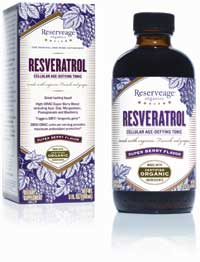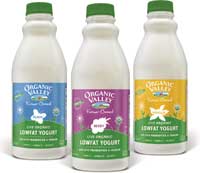Gaining Ground
Originally Published
Originally Published NO June 2010

Where some see the organic movement as an easily exploited trend, others see it as an ideal business standard. Since law established the National Organic Program back in October 2002, the organic movement has seen its share of successes and challenges. But the public's demand for a cleaner, greener product has proved unrelenting-which is why Washington, DC, industry, and consumers alike are turning more and more in favor of organic agriculture and products.
Here's a look at what's paving the way for organics.
Organics on The Hill
Beyond First Lady Michelle Obama's symbolic White House organic garden, a slew of organic budget increases suggests the term organic means more in Washington than it used to.
Folks at the Organic Trade Association (OTA; Greenfield, MA) credit the efforts of one major piece of legislation, the 2008 Farm Bill, as making significant gains in advancing U.S. organic agriculture. Through the Farm Bill, sizeable sums of money will be provided to organic agriculture during the bill's term, from 2008 to 2012.
Scientific research is always important-right? For organic research (e.g., improving seed quality and soil management), the Farm Bill provides $78 million for the Organic Agriculture Research and Extension Initiative, a U.S. Department of Agriculture (USDA) organic grants program. Meanwhile, USDA reports that prior to the bill, only $3 million was available for organic research annually. Last fall, $19 million of the new budget was officially provided in the form of research grants to universities in 10 different states.
Market research data is another tool the organic industry was in dire need of before the 2008 Farm Bill. The Farm Bill now bolsters organic data collection with a mandatory $5 million, and an extra $5 million potentially available each year as appropriations during the bill's life.
Through the Agricultural Marketing Service's (AMS) Economic Research Service, data reports are now available for major sectors of the organic farming industry and related food products. Is organic corn in high yield in the Midwest this year? State-by-state acreage reports are accessible so organic farmers and their clients may now know just that. Is organic yogurt selling well? Market data gives organic farmers a better sense of what crops to grow based on what products are most popular now. This kind of data collection, already available to non-organic farm businesses, now gives organic farmers better understanding of what crops to grow and in what amounts, and at what prices to sell them.
And organic farmers are getting more perks beyond just research and market data. To take care of high costs for organic certification-this is a big reason farms avoid the certification-$22 million in mandatory funding is available to organic farmers for cost-share assistance. Only $5 million was available under the previous bill.
But Washington sees no reason to end the discounts there. Last spring, $50 million was made available through the Environmental Quality Incentives Program budget to help conventional farmers transition their production systems to organic, and to help current organic farms make their production systems even more environmentally sustainable.
In keeping with the first year of the Farm Bill, 2010 is looking no different. This March, the U.S. Senate unanimously passed its version of the Healthy, Hunger-Free Kids Act, which would boost funding for school nutrition programs by $4.5 billion, adding six cents to the value of every school meal. What's in it for organics is an amendment, added by Senator Sherrod Brown (D–OH), which calls for the creation of a pilot project in which grants are provided on a competitive basis for the inclusion of more organic foods in after-school programs. The expenditure is set at $10 million from 2011 to 2015. The House has yet to vote on the bill.
Organics in the Home
Is it rising healthcare costs? Successful greenwashing in the marketplace? Whatever the reason for the public's interest in organic products, market reports indicate that consumers are sticking with them.
"What's great is that reports on organic purchasing habits are showing sales have been steady and even increasing," says Barbara Haumann, senior writer and editor at OTA. In a full-fledged recession, being above a loss is something to be proud of.
OTA recently published its 2010 Organic Industry Survey, and the results of that survey are strong. Organic sales in the United States reportedly jumped 5.3% in 2009, reaching a total of $26.6 billion. ($24.8 billion of that came specifically from organic food.) Organic food sales on their own rose 5.1% compared to an estimated 1.6% increase in total food sales across the map (organic and non-organic combined).
Of all our organic food choices, OTA found organic fruits and vegetables to be in greatest fashion, growing in sales by 11.4% in 2009 to reach $9.5 billion. Organic fruits and vegetables now represent 11.4% of total fruit and vegetable sales.
But what's likely the most telling of how people are flocking to organic products is where people are actually purchasing them. The OTA survey found that over half of last year's organic purchases were made where the rest of their foods are usually purchased: mainstream grocers, club stores, and retailers. Natural food stores only made up 38% of the share.

Organics on the Shelves
In order to feed hungy consumers, the organic market demands a variety of products. But for companies marketing nothing but organic products, and for companies marketing some, there are different approaches.
Draco Natural Products (San Jose, CA) is a botanical extract supplier with its own organic-certified processing facility. (The company does not exclusively sell organic.) Within the organic category, its top sellers are, understandably, more-familiar extracts like green tea and white tea. "We've seen the biggest demand for products that are just offshoots of the regular food market," says Draco technical director Brien Quirk, "but custom requests are available." Draco works with its supply farmers to achieve third-party organic certification, while also meeting its own vendor qualifications as an organic supplier. Organic doesn't make up a majority of Draco's sales-not yet, anyway-but with its own organic-certified processing facility and farmers certified for U.S. and European Union organics sales, Draco is well-positioned for what the company sees as a growing global market.
Then there are groups like Organic Valley (LaFarge, WI), a family farm cooperative that deals exclusively with organic products and has an expansive product line of them. Organic Valley's latest launches haven't been the most typical; instead, they're filling holes in the organic market.
With omega-3 gaining in popularity, the cooperative saw fit to launch its own organic, omega-3–fortified milk. "Omegas have shown to be a real concern with consumers, and where there's a demand, there's a demand for organic," says Theresa Marquez, Organic Valley chief marketing executive. The cooperative recently launched organic pourable yogurts, too, and soy and dairy creamers are expected to launch next year. "This organic movement is really starting to take off," says Marquez, "and as people become more concerned about their health, they will find that groups like ours are putting out enough organic products to meet all their needs."
In fact, the demand for organics is seemingly so vast that consumers are seeking organic quality from specialty products. Reserveage Organics (Gainesville, FL) specializes in resveratrol products made with organic ingredients. Believe it or not, there is demand for organic in a market as young as resveratrol.
"Our use of organic ingredients means a great deal to our customers because it shows that we are making every effort to be a stand-out in the category," says Jennifer Eastman, Reserveage Organics public relations manager. "Although our product pricing is competitive with non-organic competitors, customers are still willing to spend more because they are more trusting of organically sourced products. As individuals become increasingly concerned with their health and product sourcing, they are more readily willing to spend more in order to protect their health and funds in the long run."

Organics on the Up
The health benefit of U.S.-certified organic is an oft-debated topic. Some argue that organic-certified products can still be made with a variety of synthetic ingredients, that organic cosmetics are not regulated-the list goes on.
But the National Organic Program is still a relatively young program, and public approval for the program's seal is not slowing. Rest assured, improvements are being made.
For instance, this February, USDA tightened standards on organic livestock. The law now requires that all organic livestock graze for at least 120 days of the year, and that organic livestock receive at least 30% dry matter feed directly from grazing pastures. Producers must create a management plan for such procedures, and the USDA has already held several workshops for education on the new rule.
Another concern with U.S. organics is that enforcement and inspection have needed more resources. In March, the USDA Inspector General published the results of an independent audit of the National Organic Program. The audit reported that oversight and enforcement of organic-certified companies has been lax in recent years. But what is also included in the report are 14 recommendations to improve enforcement. Within the report are published responses from AMS. The new livestock rule is, in fact, one example of the agency already improving standards based on the report.
The first page of the report highlights the agency's willingness to respond to these kinds of audits. "We found that AMS officials made improvements to the program since our prior audit (published in 2005) and implemented corrective actions for 8 of the 10 recommendations issued," reads the report. AMS administrator Rayne Pegg also contends, "To address the inadequate funding for oversight and enforcement, $3.1 million has been proposed in the NOP budget for 2011."
This year's audit has been primarily reported as a negative assessment of NOP, but the weaknesses being called out are actually more telling of improvements on the way. Theresa Marquez of Organic Valley stresses that companies, too, need to be held to high organic standards.
"You might say that there are some people who think that the USDA Organic seal should do everything," says Marquez. "It should be local, it should be cooperative, it should be family farming-it should be the be all, end all of everything. We don't happen to believe that. We've always thought that these standards should have solid direction and that they should have strong teeth. But we believe it's our own collective responsibility as brands to have the integrity and self-motivation to go from there, elevating standards even higher for our consumers, competitors, and fellow industry partners."
Magnesium L-threonate, Magtein, earns novel food authorization in the European Union
December 19th 2024According to the announcement, the authorization is also exclusive to AIDP and its partner company and licensee, ThreoTech, meaning that they are the only parties that can market magnesium L-threonate in the EU for a period of five years.
Senate Committee has released the text of 2024 Farm Bill, with changes to hemp regulations
November 19th 2024The U.S. Senate Committee on Agriculture, Nutrition, & Forestry has introduced the Rural Prosperity and Food Security Act, which will serve as the Senate’s draft for the 2024 Farm Bill.